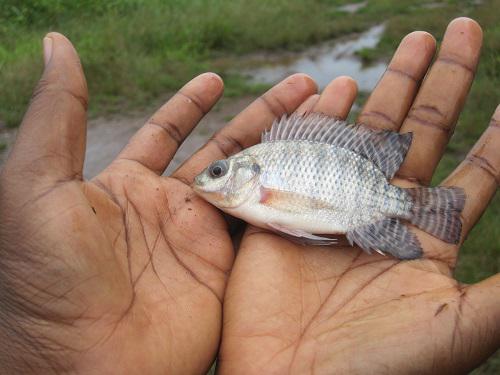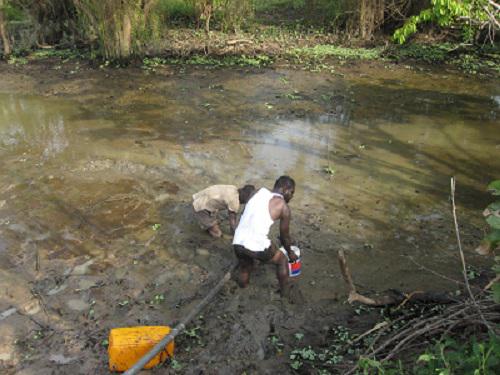Gifty Anane-Taabeah
This project will quantify the genetic variability within and differentiation between natural populations of O. niloticus in different river basins in Ghana, to aid in conserving the species’ genetic diversity and local adaptation. The study also will assess the genetic impact of aquaculture on wild populations and generate baseline information that, in collaboration with relevant stakeholders, would aid in developing a monitoring program to help mitigate potentially negative ecological impacts of aquaculture on natural receiving populations.

Nile tilapia harvested from the Afram River in 2014. © Gifty Anane-Taabeah
The Nile tilapia (Oreochromis niloticus) is a widely distributed cichlid fish known to occur naturally in East and West Africa, as well as the Middle East (Agnese et al. 1997). The species is ecologically and socio-economically important across its native range, and is widely harvested and farmed worldwide. Many natural populations of O. niloticus currently face the threats of habitat destruction, overfishing, and genetic introgression from hybridization with aquaculture strains (Dankwa et al. 2005, FASDP 2011, Ndiwa et al. 2014), which could result in population decline and possible extinction.

Sampling backwaters in Aframso for Nile tilapia. © Gifty Anane-Taabeah
In Ghana, habitat degradation and destruction resulting from small-scale gold mining activities (http://www.graphic.com.gh/news/general-news/effects-of-galamsey.html) poses significant threat to the species’ survival and reproduction. The rapid expansion of aquaculture in the country also threatens the local adaptation and genetic diversity within wild populations because fish escape easily from aquaculture facilities into surrounding natural systems (Attipoe et al. 2013). Therefore, it is imperative to conduct timely studies to identify populations at risk, and to develop conservation plans to protect this important species. The goal of this project is to use a population genetics approach to:
1. determine the genetic variability within O. niloticus populations in different drainage basins in Ghana
2. assess the effect of aquaculture on the genetic diversity of natural populations of O. niloticus in Ghana
Outside the Volta system, information on the genetic diversity within O. niloticus in Ghana is almost non-existent. Therefore, I will collect O. niloticus samples from relatively understudied basins such as the Black Volta, Pra and Tano Rivers. Together with O, niloticus samples previously obtained from the Volta River basin, I will conduct genetic analysis to determine population variability and population structure, and estimate effective population sizes in order to identify populations requiring conservation management.
In addition, I will conduct a pilot study using a cluster of fish farms on Volta Lake in Ghana to assess the level of genetic mixing between farmed O. niloticus and natural populations downstream of the cage farms. At the end of the study, I will organize a stakeholder workshop to disseminate research findings, and to create conservation awareness for O. niloticus. A comprehensive knowledge of the genetic diversity and differentiation in natural populations will help identify imperiled populations, and will help initiate conservation actions aimed at protecting O. niloticus in the long term. The knowledge generated also will be useful in selecting appropriate stocks for aquaculture development in Ghana.